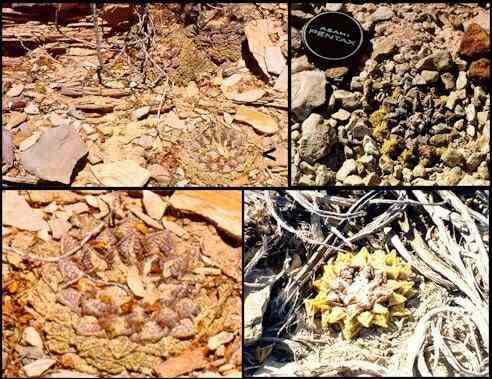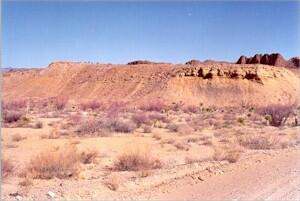LIVING ROCK CACTUS (Ariocarpus fissuratus) The living rock cacti produce a star-shaped rosette of fleshy, triangular tubercles which have no spines and lie almost flat on the soil surface (see the compound image below). Each plant has a large turnip-like taproot, which lies below the soil surface and serves for water storage. These plants are characteristic of the dry limestone ridges of the Chihuahuan Desert in the extreme south of the USA (e.g. Big Bend National Monument, Texas) and northern Mexico. They are well camouflaged by blending with the rock chippings that accumulate on the soil surface of the limestone ridges. Click on
different parts of this image to see larger images
Ariocarpus fissuratus is the only species of this genus that occurs in the USA, although five other species of Ariocarpus are found in the Chihuahuan Desert of mainland Mexico. All are protected plants in the regions where they occur. Many exist as only small, isolated populations and are in danger of extinction because they sought by plant collectors. In times of severe drought the whole above-ground portion of these plants can shrink and be covered by rock fragments, but the taproot remains alive. These plants often have a woolly centre, from which bright pink-violet flowers emerge in autumn. GO TO: |

